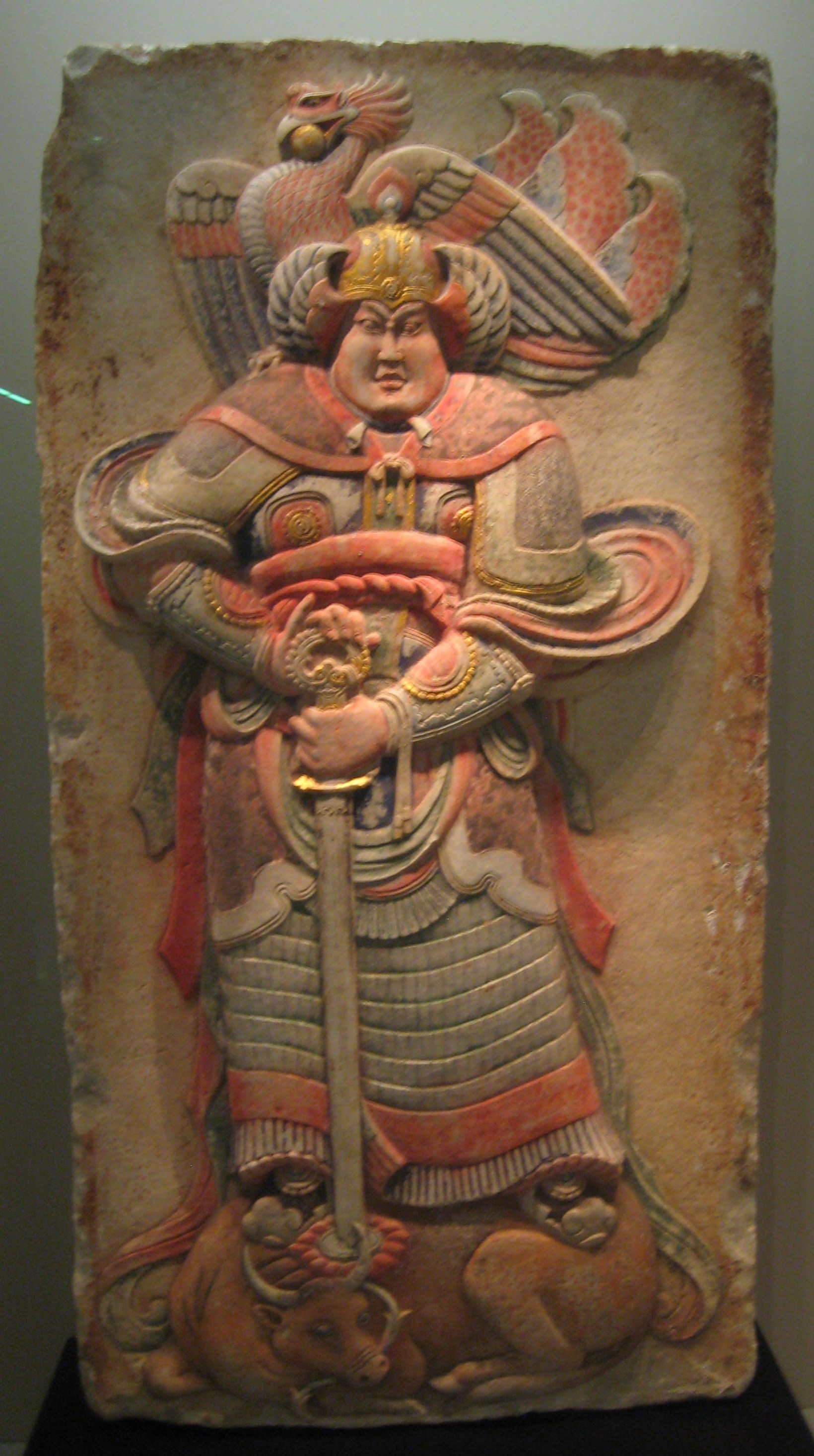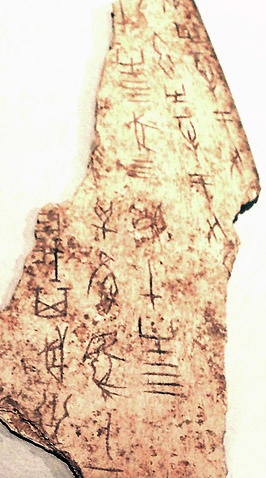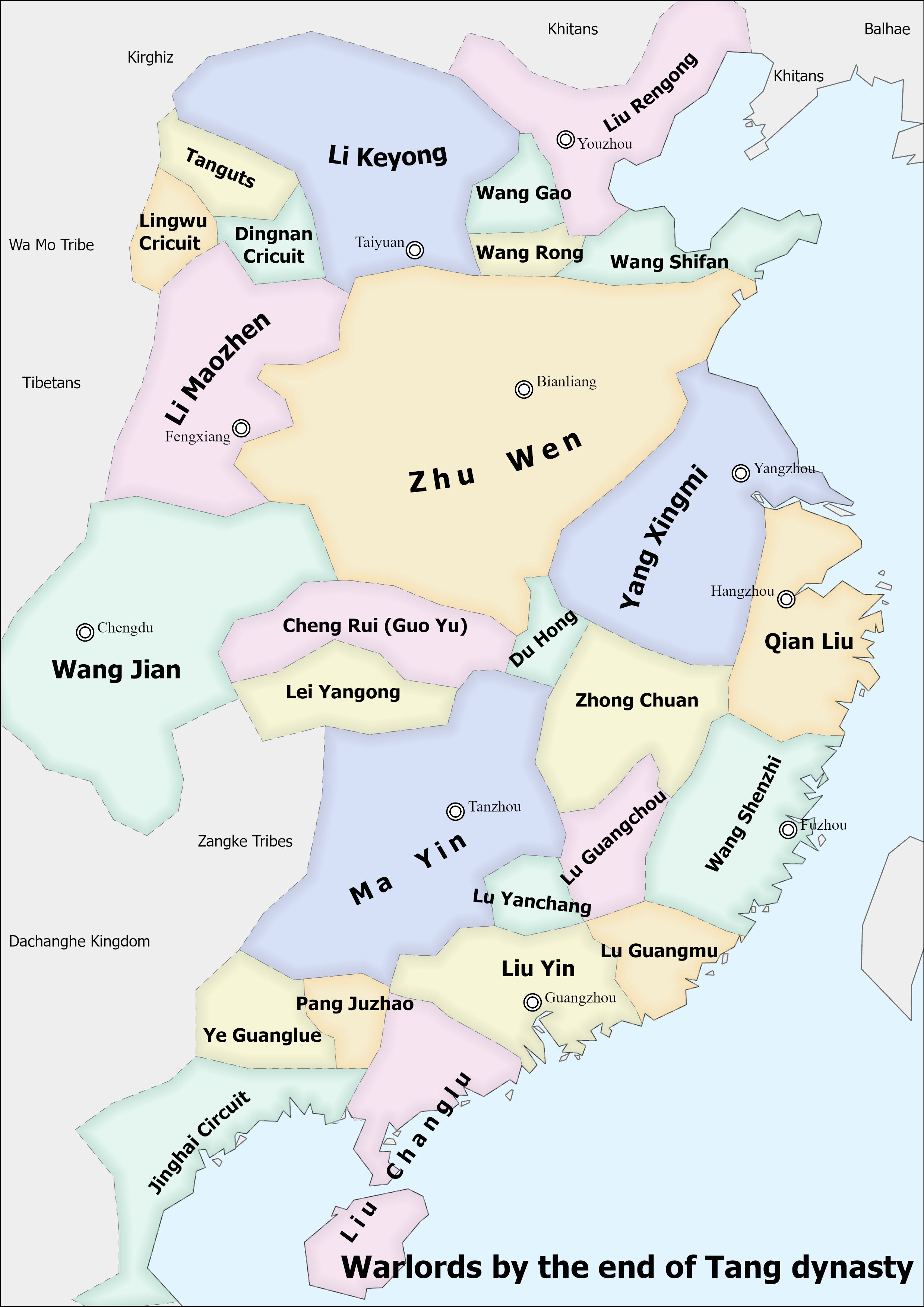|
Liu Zhiyuan
Liu Zhiyuan () (March 4, 895 – March 10, 948), later changed to Liu Gao (), also known by his temple name as the Emperor Gaozu of Later Han (), was the founding Emperor of China, emperor of the Shatuo-led Chinese Later Han (Five Dynasties), Later Han dynasty, the fourth of the Five Dynasties during the Five Dynasties and Ten Kingdoms period. He was the older brother of the Northern Han founder Liu Chong, Liu Min (Emperor Shizu). Background Liu Zhiyuan was born in 895, during the reign of Emperor Zhaozong of Tang, at Taiyuan. His ancestors were of Shatuo extraction. His father Liu Dian () served as an officer under the major late-Tang dynasty, Tang warlord Li Keyong the military governor of Hedong Circuit (河東, headquartered at Taiyuan). His mother was a Lady An, likely Liu Dian's wife. He had at least one other brother of the same father (and possibly of the same mother), Liu Chong.''New History of the Five Dynasties'', :zh:s:新五代史/卷18, vol. 18. Lady An — li ... [...More Info...] [...Related Items...] OR: [Wikipedia] [Google] [Baidu] |
Old History Of The Five Dynasties
The ''Old History of the Five Dynasties'' ( zh, t=舊五代史, pinyin=, p=Jiù Wǔdài Shǐ) was an official history mainly focusing on Five Dynasties and Ten Kingdoms period, Five Dynasties era (907–960), which controlled much of northern China proper, China. And it also includes some history of other south states during the era. It was compiled by the Song dynasty official-scholar Xue Juzheng in the first two decades of the Song dynasty, which was founded in 960. It is one of the Twenty-Four Histories recognized through Chinese history. The book comprises 150 chapters, and was in effect divided into 7 books, they are: ''Book of Liang'' (24 volume), ''Book of Tang'' (50 volume), ''Book of Jin'' (24 volume), ''Book of Han'' (11 volume), ''Book of Zhou'' (22 volume), ''Biography, Liezhuan'' (7 volume) and ''Zhi'' (12 volume), respectively''.'' After the ''New History of the Five Dynasties'' by Ouyang Xiu was published, it was no longer popular. In the 12th century it was remov ... [...More Info...] [...Related Items...] OR: [Wikipedia] [Google] [Baidu] |
Emperor Zhaozong Of Tang
Emperor Zhaozong of Tang (March 31, 867 – September 22, 904), né Li Jie, name later changed to Li Min and again to Li Ye, was the penultimate emperor of China's Tang dynasty. He reigned from 888 to 904 (although he was briefly deposed by the eunuch Liu Jishu in 900 and restored in 901). Emperor Zhaozong was the seventh son of Emperor Yizong and younger brother of Emperor Xizong. Later, Li Jie was murdered by Zhu Wen, who would later become the founding emperor of the Later Liang dynasty. During Emperor Zhaozong's reign, the Tang dynasty fell into total disarray and rebellions, which had been ongoing since the reign of his older brother, Emperor Xizong, as they erupted throughout the country while the imperial government's authority effectively disappeared. In the midst of all this, Emperor Zhaozong tried to salvage the dying dynasty. However, his efforts to reassert imperial power generally backfired, as his unsuccessful campaigns against Li Keyong, Chen Jingxuan, and ... [...More Info...] [...Related Items...] OR: [Wikipedia] [Google] [Baidu] |
Later Liang (Five Dynasties)
Liang, known in historiography as the Later Liang () (1 June 907 – 19 November 923) or the Zhu Liang (), was an imperial dynasty of China and the first of the Five Dynasties during the Five Dynasties and Ten Kingdoms period. It was founded by Zhu Wen (Emperor Taizu), after he forced the last emperor of the Tang dynasty to abdicate in his favour (and then murdered him). The Later Liang would last until 923 when it was destroyed by the Later Tang dynasty. Formation Zhu Wen initially allied himself as Huang Chao's lieutenant. However, he took Huang's best troops and established his own power base as a warlord in Kaifeng. By 904, he had exerted control over both of the twin Tang dynasty capitals of Chang'an and Luoyang. Tang emperor Zhaozong was ordered murdered by Zhu in 904 and the last Tang emperor, Ai Di ( Emperor Ai of Tang), was deposed three years later. Emperor Ai of Tang was murdered in 908, also ordered by Zhu. Meanwhile, Zhu Wen declared himself emperor of ... [...More Info...] [...Related Items...] OR: [Wikipedia] [Google] [Baidu] |
Emperor Ai Of Tang
Emperor Ai of Tang (27 October 89226 March 908), also known as Emperor Zhaoxuan of Tang (), born Li Zuo, later known as Li Chu (), was the last emperor of the Tang dynasty of China. He reigned—as a puppet ruler—from 904 to 907. Emperor Ai was the son of Emperor Zhaozong. He was murdered by Zhu Wen. Emperor Ai ascended the throne at the age of 11 after his father, the Emperor Zhaozong, was assassinated on the orders of the paramount warlord Zhu Quanzhong in 904, and while Emperor Ai reigned, the Tang court, then at Luoyang, was under the control of officials Zhu put in charge. In 905, under the instigation of his associates Liu Can and Li Zhen, Zhu had Emperor Ai issue an edict summoning some 30 senior aristocrats at Baima Station (白馬驛, in modern Anyang, Henan), near the Yellow River; the aristocrats were thereafter ordered to commit suicide, and their bodies were thrown into the Yellow River. He could do nothing to stop Zhu from murdering his brothers and mother ... [...More Info...] [...Related Items...] OR: [Wikipedia] [Google] [Baidu] |
Henan
Henan; alternatively Honan is a province in Central China. Henan is home to many heritage sites, including Yinxu, the ruins of the final capital of the Shang dynasty () and the Shaolin Temple. Four of the historical capitals of China, Luoyang, Anyang, Kaifeng and Zhengzhou, are in Henan. While the province's name means 'south of the river', approximately a quarter of the province lies north of the Yellow River. With an area of , Henan covers a large part of the fertile and densely populated North China Plain. Its neighboring provinces are Shaanxi, Shanxi, Hebei, Shandong, Anhui, and Hubei. Henan is China's third-most populous province and the most populous among inland provinces, with a population of over 99 million as of 2020. It is also the world's seventh-most populous administrative division; if it were a country by itself, Henan would be the 17th-most populous in the world, behind Egypt and Vietnam. People from Henan often suffer from regional discrimination ... [...More Info...] [...Related Items...] OR: [Wikipedia] [Google] [Baidu] |
Kaifeng
Kaifeng ( zh, s=开封, p=Kāifēng) is a prefecture-level city in east-Zhongyuan, central Henan province, China. It is one of the Historical capitals of China, Eight Ancient Capitals of China, having been the capital eight times in history, and is most known for having been the Chinese capital during the Song dynasty#Northern Song, 960–1127, Northern Song dynasty. As of the 2020 Chinese census, 2020 census, 4,824,016 people lived in Kaifeng's Prefecture, of whom 1,735,581 lived in the metropolitan area consisting of Xiangfu, Longting, Shunhe Hui, Gulou and Yuwantai Districts. Located along the Yellow River's southern bank, it borders the provincial capital of Zhengzhou to the west, Xinxiang to the northwest, Shangqiu to the east, Zhoukou to the southeast, Xuchang to the southwest, and Heze of Shandong to the northeast. Kaifeng is a major city for scientific research, appearing among the world's top 200 List of cities by scientific output, cities by scientific output as track ... [...More Info...] [...Related Items...] OR: [Wikipedia] [Google] [Baidu] |
Zhu Quanzhong
Emperor Taizu of Later Liang (), personal name Zhu Quanzhong () (December 5, 852 – July 18, 912), né Zhu Wen (), name later changed to Zhu Huang (), nickname Zhu San (朱三, literally, "the third Zhu"), was a Chinese military general, monarch, and politician. He was a ''Jiedushi'' (military governor) and warlord who in 907 overthrew the Tang dynasty and established the Later Liang dynasty, ruling as its first emperor, ushering in the era of the Five Dynasties and Ten Kingdoms. The last two Tang emperors, Emperor Zhaozong of Tang (Li Jie) and Emperor Ai of Tang (Li Zuo), who "ruled" as his puppets from 903 to 907, were both murdered by him. Zhu Wen initially served as a general under the rebel Huang Chao, but defected to the weakened Tang dynasty in 882. Taking advantage of the total chaos in the wake of Huang Chao's defeat, Zhu Wen was able to conquer parts of central China after destroying warlords such as Qin Zongquan, Shi Pu, Zhu Xuan, and Zhu Jin, although most o ... [...More Info...] [...Related Items...] OR: [Wikipedia] [Google] [Baidu] |
Li Siyuan
Li Siyuan (李嗣源, later changed to Li Dan (李亶)) (10 October 867 – 15 December 933), also known by his temple name as the Emperor Mingzong of Later Tang (後唐明宗), was the second emperor of the Later Tang dynasty of China, reigning from 926 until his death. He was an ethnic Shatuo originally named, in the Shatuo language, Miaojilie (邈佶烈). Adopted by the ethnic Shatuo ruler Li Keyong of the Former Jin dynasty, Li Siyuan became a trusted general under both Li Keyong and Li Keyong's successor Li Cunxu (Emperor Zhuangzong), the Later Tang founder. In 926 he seized power by a coup d'état when a mutiny called the Xingjiao Gate Incident killed Li Cunxu, and ruled with both discipline and compassion for the next seven years. Despite an abundance of natural disasters, his reign was markedly more peaceful than the half-century preceding it. Background Li Siyuan was born with the Shatuo name of Miaojilie in 867 in Yingzhou (應州; present-day Ying County, Sh ... [...More Info...] [...Related Items...] OR: [Wikipedia] [Google] [Baidu] |
Murong Yanchao
Murong Yanchao () (died June 15, 952''Zizhi Tongjian'', vol. 290.Academia Sinicabr>Chinese-Western Calendar Converter), known at one point as Yan Kunlun (), was a Chinese general of the Later Tang, Later Jin, and Later Han dynasties. As a half-brother of the Later Han founding emperor Liu Zhiyuan (Emperor Gaozu), he was particularly prominent in the Later Han dynasty. After the Later Han throne was seized by the general Guo Wei, who founded the Later Zhou dynasty, Murong initially submitted to Guo but then rebelled. His rebellion was quickly suppressed, and he committed suicide. Background It is not known when Murong Yanchao was born. However, as he was known to be a younger half-brother — born of the same mother, a Lady An — as Liu Zhiyuan,''New History of the Five Dynasties'', vol. 53. who was born in 895,''Old History of the Five Dynasties'', vol. 99. he must have been born after. ( Liu Chong, who was of the same father (a man named Liu Dian ()) as Liu Zhiyuan, mig ... [...More Info...] [...Related Items...] OR: [Wikipedia] [Google] [Baidu] |
New History Of The Five Dynasties
The ''Historical Records of the Five Dynasties'' (''Wudai Shiji'') is a Chinese history book on the Five Dynasties period (907–960), written by the Song dynasty official Ouyang Xiu in private. It was drafted during Ouyang's exile from 1036 to 1039 but not published until 1073, a year after his death. An abridged English translation by Richard L. Davis was published in 2004. The history book is a typical representative of the use of Spring and Autumn style (春秋笔法). It has high literal value but its content may not be accurate enough. One of the official Twenty-Four Histories of China, the book is frequently referred to as the ''New History of the Five Dynasties'' (''Xin Wudai Shi'') in order to distinguish it from the ''Old History of the Five Dynasties'' which was published in 974. Though both books follow a similar format, Ouyang's book is more concise and markedly more analytical. Contents ''New History of the Five Dynasties'' covers the Later Liang, Later Tan ... [...More Info...] [...Related Items...] OR: [Wikipedia] [Google] [Baidu] |



